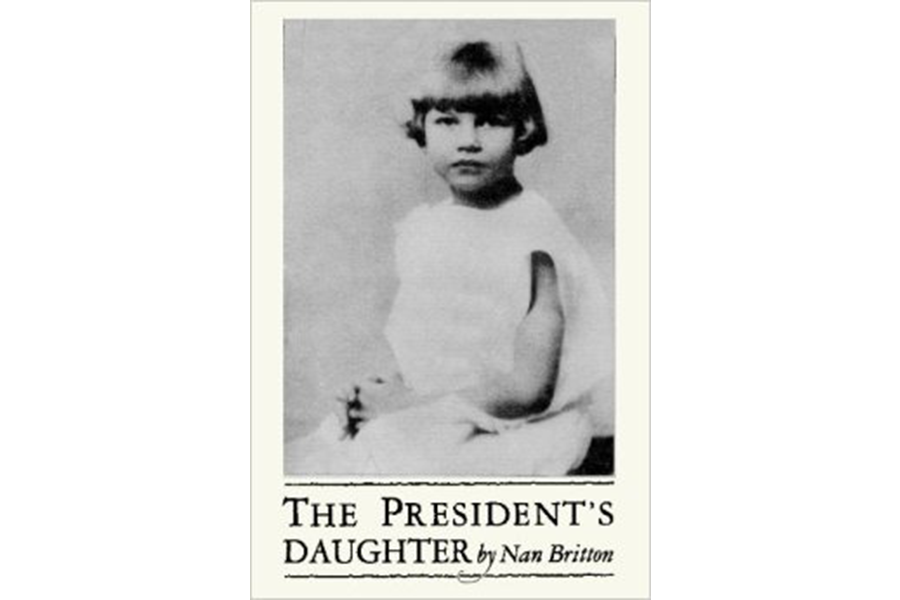Warren Harding: the world takes another look at scandalous claims
Loading...
Meet the Warren G. Harding you never knew in history class: A charming and jealous-minded sweet-talker who knew every trick in the adulterer’s playbook.
We can glean all this from the scandalous Jazz Age memoir by his no-longer-alleged mistress. Newly released DNA results confirm that a young woman named Nan Britton did indeed have a lovechild with President Harding, whose stern expression in photos belies the lusty risk-taker within.
This gives more credibility to the startling stories Britton tells in her 1928 book The President’s Daughter (available for $1.99 via Kindle).
The kiss-and-more-and-tell book is mostly tame by today’s standards, although it does include juicy tales of obsession, subterfuge, and denial. And it features a heroine as well: a mother fighting for a better life, not only for own her daughter, but for all children born out of wedlock.
As we enter a presidential election season haunted by the ghost of another White House fling, here are 4 facts about a man, his mistress, and an era gleaned from “The President’s Daughter”:
1. Harding must have graduated from Cad College.
Like any successful politician, Warren Harding knew how to make plenty of promises. He didn’t stop when it came to matters of love, shamelessly leading his mistress on just like so many men who strayed before and after him.
In fact, Harding could have written the adulterer’s playbook: He complained about his wife Florence to a sympathetic ear (“she makes life hell for me, Nan!”), dubbed Britton the “"the sweetheart incomparable” (even though he’d been having another dalliance), and grandly predicted what he would do if the old-ball-and-chain passed away. As Britton wrote, “he wanted to buy a place for us and live in the country, and often during those days Mr. Harding said to me, ‘Wouldn't that be grand, Nan? You'd make such a darling wife!’”
Sure, Warren.
It’s hard to imagine a rising political star would want to face the scandal of marrying a woman 30 years younger, especially if the news got out about how they’d met. Then again, President Grover Cleveland married a woman 27 years his junior in a White House ceremony. The youth and beauty of Cleveland’s bride, whom he’d known since birth, distracted voters from his own tawdry lovechild scandal.
2. Harding’s rival woos his mistress.
Like so many failed presidential candidates, an Ohio politician named James M. Cox is forgotten today. The Democrat ran against Harding for the presidency in 1920 and lost, big time. (His running mate, one Franklin Delano Roosevelt, would go onto bigger things.)A couple of years earlier, Britton ran into the married Cox on a train when they shared the same cabin. She didn’t explain that she knew Harding and bristled when he made a sly remark: “I understand Mr. Harding is a great one with the ladies.” No delicate flower, she snapped back: “I don’t know anything about that; I know he is very lovely to his wife.”
As Britton’s story goes, Cox wanted her to join him and his daughter for dinner (hmm) and told her that he’d trust her “anywhere in the world” (double hmm). A jealous Harding was furious, and suggested that “perhaps Mr. Cox can assume all responsibilities toward you more capably than I have done.”
Zing! This remark, Britton declared in a rare bit of criticism toward her beau, was “cruel.”
3. Britton was no embittered ‘other woman.'
In retrospect, Harding was almost certainly leading Britton on. After all, he’d had at least one other extramarital affair. (His “intimate and frank” love letters to his mistress of 14 years were released in 2014 to the glee of delighted late-night comedians.)Britton was bruised by harsh treatment from Harding’s family after his sudden death in 1923. But a few years later, she was clearly still smitten by the much older man, talking of the “spiritual lights of understanding, gladness, and sorrow that shone from the eyes of him.”
She’d been mooning over Harding for quite a while. Britton became obsessed with Harding – today, we might call her a stalker – at around the age of 14 in the year 1910. At the time, she lived in Marion, Ohio, where he worked as a newspaper editor and was running for governor. It’s such a small town that she’d hear about him from her English teacher (Harding’s sister) and see posters of him in Main Street store windows.
He was the “ideal American,” she decided, and she couldn't stop raving about him or even calling him at home on the phone: “I knew that I was in love with Warren Harding.” Even Harding’s wife heard about her obsession, and a friend of the family warned Britton’s mother that the teenager should knock it off.
She did not.
4. Britton had social justice on her mind.
“The President’s Daughter” is often dull, full of tedious details about Britton’s fight for recognition of her child as a true Harding. But her passion comes through, and she shows a modern understanding of how to mold a message: She paints her daughter’s rejection as part of a wider crisis of illegitimate children denied social justice.
She writes: “If it were within my humble prerogative and power, as the mother of Warren Gamaliel Harding's only child, to open the eyes of those blinded through adherence to hypocrisies which are basely unfair, and I would bear the glorious fact of what constitutes true birth legitimacy – which, in a word, is love.”
Call her a thoroughly modern mistress, and a woman who deserves to be known as more than a presidential plaything.
Randy Dotinga, a Monitor contributor, is president of the American Society of Journalists and Authors.







